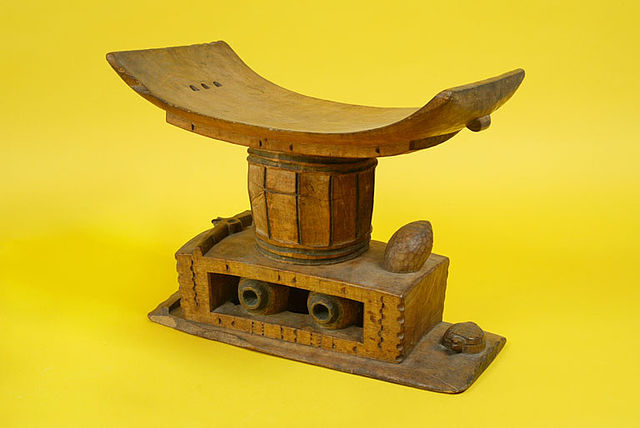The War of the Golden Stool, also known as the Yaa Asantewaa War, the Third Ashanti Expedition, the Ashanti Uprising, or variations thereof, was a campaign in 1900 during the series of conflicts between the United Kingdom and the Ashanti Empire, an autonomous state in West Africa that fractiously co-existed with the British and its vassal coastal tribes.
Typical fight in the forest, Anglo-Ashanti War of 1900 (Battles of the nineteenth century, 1901)
An Akan stool believed to be for a Queen mother, 1940–1965, in the collection of the Children's Museum of Indianapolis
Ashanti War in 1900 (Battles of the nineteenth century, 1901)
General Sir James Willcocks, KCMG, DSO, and staff, at the entrance to the fort at Kumasi
The Asante Empire, today commonly called the Ashanti Empire, was an Akan state that lasted from 1701 to 1901, in what is now modern-day Ghana. It expanded from the Ashanti Region to include most of Ghana and also parts of Ivory Coast and Togo. Due to the empire's military prowess, wealth, architecture, sophisticated hierarchy and culture, the Ashanti Empire has been extensively studied and has more historic records written by European, primarily British, authors than any other indigenous culture of sub-Saharan Africa.
Kente cloth, the traditional garment worn by Ashanti royalty, has been widely adopted throughout the Ashanti Kingdom.
Golden Stool (Sika dwa) in the Ashanti Kingdom, 1935
Aban Palace at the time of the Third Anglo-Ashanti War in 1874
Manhyia Palace. Current official residence of the Asantehene.








